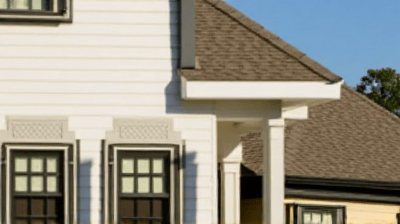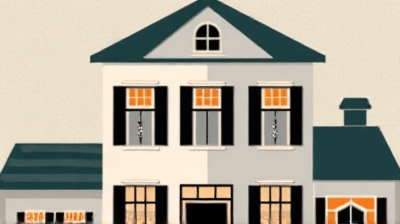Homeowners insurance is a vital component of home ownership, providing a safety net for your property and personal possessions. However, understanding what your homeowners insurance policy covers—and what it does not—is crucial for ensuring that you are adequately protected against unexpected disasters.

Understanding Homeowners Insurance
What Is Homeowners Insurance?
Homeowners insurance is a type of property insurance that provides financial protection against specific risks associated with owning a home. It typically covers the structure of your home, personal belongings, liability for injuries sustained on your property, and additional living expenses if you are temporarily unable to live in your home due to a covered event.
Types of Homeowners Insurance Policies
There are several types of homeowners insurance policies, each designed to meet different needs:
-
HO-1 (Basic Form): This is a basic policy that covers limited perils, such as fire, lightning, windstorm, and theft. It offers minimal protection and is not widely available.
-
HO-2 (Broad Form): This policy covers more perils than HO-1, including additional risks such as falling objects and damage caused by freezing.
-
HO-3 (Special Form): The most common type of policy, HO-3 covers the structure of your home against all perils except for specific exclusions. Personal property is typically covered on a named-peril basis.
-
HO-4 (Renter's Insurance): Designed for renters, this policy covers personal belongings and liability but does not cover the structure of the building.
-
HO-5 (Comprehensive Form): This policy offers extensive coverage for both the structure and personal belongings, covering all perils unless specifically excluded.
-
HO-6 (Condominium Insurance): This policy is tailored for condo owners and covers personal property, liability, and improvements made to the unit.
-
HO-7 (Mobile Home Insurance): Specifically for mobile and manufactured homes, this policy provides coverage similar to that of HO-3.
-
HO-8 (Modified Coverage Form): Designed for older homes, this policy provides actual cash value coverage and is tailored for properties that don't meet the criteria for standard coverage.
What Homeowners Insurance Covers
Understanding your homeowners insurance coverage involves familiarizing yourself with the key components that are typically included. These components commonly fall into four categories: dwelling coverage, personal property coverage, liability protection, and additional living expenses.
1. Dwelling Coverage
This portion of your policy protects the structure of your home itself, including the walls, roof, floors, and built-in appliances. Here are some important aspects of dwelling coverage:
-
Coverage Amount: The coverage amount should reflect the cost to rebuild your home in case of a total loss. This amount can differ from the market value of your home.
-
Covered Perils: Dwelling coverage typically protects against perils such as:
- Fire and smoke damage
- Windstorms and hail
- Lightning strikes
- Vandalism and malicious mischief
- Theft
- Falling objects
-
Reconstruction Costs: If a natural disaster or covered event causes significant damage, dwelling coverage pays for repairs or rebuilding according to the estimated reconstruction costs.
2. Personal Property Coverage
Personal property coverage protects your belongings within your home, including furniture, electronics, clothing, and other personal items. Here’s what you need to know:
-
Actual Cash Value vs. Replacement Cost: Personal property can be covered on two bases:
- Actual Cash Value (ACV): Pays for the current market value of an item, factoring in depreciation.
- Replacement Cost: Covers the full cost to replace the item with a new one of similar kind and quality without depreciation.
-
Common Covered Items: Personal property coverage usually includes:
- Furniture and appliances
- Clothing and personal items
- Electronics like televisions and computers
- Valuable items such as jewelry or artwork (may require separate coverage)
-
Off-Premises Coverage: Many policies extend personal property coverage to items outside the home, such as belongings stored in a storage unit or items taken on vacation.
3. Liability Protection
Liability protection is crucial for homeowners, as it shields you from financial loss if someone is injured on your property or if you accidentally cause damage to someone else's property. Key points include:
-
Coverage Limits: Liability protection typically comes with specific coverage limits. It is wise to assess whether these limits are sufficient based on your personal circumstances and assets.
-
Personal Injury Protection: Liability protection also covers legal costs associated with lawsuits resulting from personal injury, slander, or defamation claims.
-
Medical Payments: Most policies also include a provision for medical payments that cover minor injuries sustained by visitors, regardless of fault. This could help prevent lawsuits for minor incidents.
4. Additional Living Expenses (ALE)
If your home becomes uninhabitable due to a covered event, additional living expenses coverage can help with extra costs incurred while staying elsewhere. Important aspects of ALE coverage include:
-
Temporary Accommodations: Covers accommodations, such as hotel expenses, while your home is being repaired or rebuilt.
-
Food Costs: Helps with increased food costs if you are unable to cook at home.
-
Duration of Coverage: ALE coverage typically lasts until your home is livable again or for a specific period defined in your policy.

Common Exclusions in Homeowners Insurance
While homeowners insurance provides substantial coverage, certain exclusions can significantly impact the extent of your protection. Being aware of these common exclusions can help you make informed decisions regarding your policy and obtain additional coverage if necessary.
1. Flood Damage
Standard homeowners insurance policies do not cover flood damage. Homeowners in areas prone to flooding should consider purchasing a separate flood insurance policy through the National Flood Insurance Program (NFIP) or private insurers.
2. Earthquake Damage
Similar to flood coverage, earthquake damage is typically excluded from standard homeowners insurance policies. Homeowners in earthquake-prone regions should look into earthquake insurance to protect their homes from seismic events.
3. Maintenance Issues
Damage resulting from poor maintenance, such as mold growth, rust, or pest infestations, is generally not covered. Homeowners are responsible for regular upkeep to maintain their property.
4. Intentional Damage
Any damage caused intentionally by the homeowner or any household member is not covered. This includes vandalism or destruction of property.
5. Personal Property Limits
Certain high-value items, such as jewelry, art, and collectibles, may have limited coverage under personal property protection. Homeowners may need to purchase scheduled personal property endorsements to ensure full coverage for these items.
6. Business Activities
If you run a business from home, standard homeowners insurance policies typically do not cover business-related liabilities or damages. Business owners should consider obtaining a separate business insurance policy or adding a rider to their homeowners policy.
7. Government Action
Damage resulting from government actions, such as confiscation, destruction, or enforcement of building codes, is usually not covered. Homeowners should be aware of local government regulations and policies that may affect their insurance coverage.
Choosing the Right Homeowners Insurance Policy
Understanding what your homeowners insurance covers and identifying common exclusions is just the beginning. Knowing how to choose the right policy is essential for adequate coverage.
1. Assess Your Coverage Needs
Consider factors such as the value of your home, the estimated cost of rebuilding, your personal belongings, and your long-term goals when evaluating your coverage needs. Use an insurance calculator or consult an agent for assistance.
2. Compare Policies
Shop around and compare quotes from multiple insurance providers. Evaluate coverage options, policy limits, deductibles, and premiums to find the best fit for your needs.
3. Investigate Discounts
Inquire about potential discounts that could lower your premiums. Many insurers offer discounts for:
- Bundling policies (e.g., homeowners and auto insurance)
- Installing security systems or smoke detectors
- Being claims-free for a certain period
4. Read the Fine Print
Before signing a policy, read through the terms and conditions carefully. Ensure that you understand the coverage limits, deductibles, and exclusions.
5. Review and Update Regularly
As your life circumstances change, it is essential to review and update your homeowners insurance policy regularly. Major life events, such as renovating your home or acquiring valuable possessions, may require adjustments to your policy.
Conclusion
Homeowners insurance is a crucial aspect of protecting your property and personal belongings from unexpected events. Understanding what your policy covers and recognizing common exclusions can help you make informed decisions that safeguard your investment. By assessing your needs, comparing policies, and staying proactive, you can find the right homeowners insurance to provide peace of mind and financial protection for years to come.



